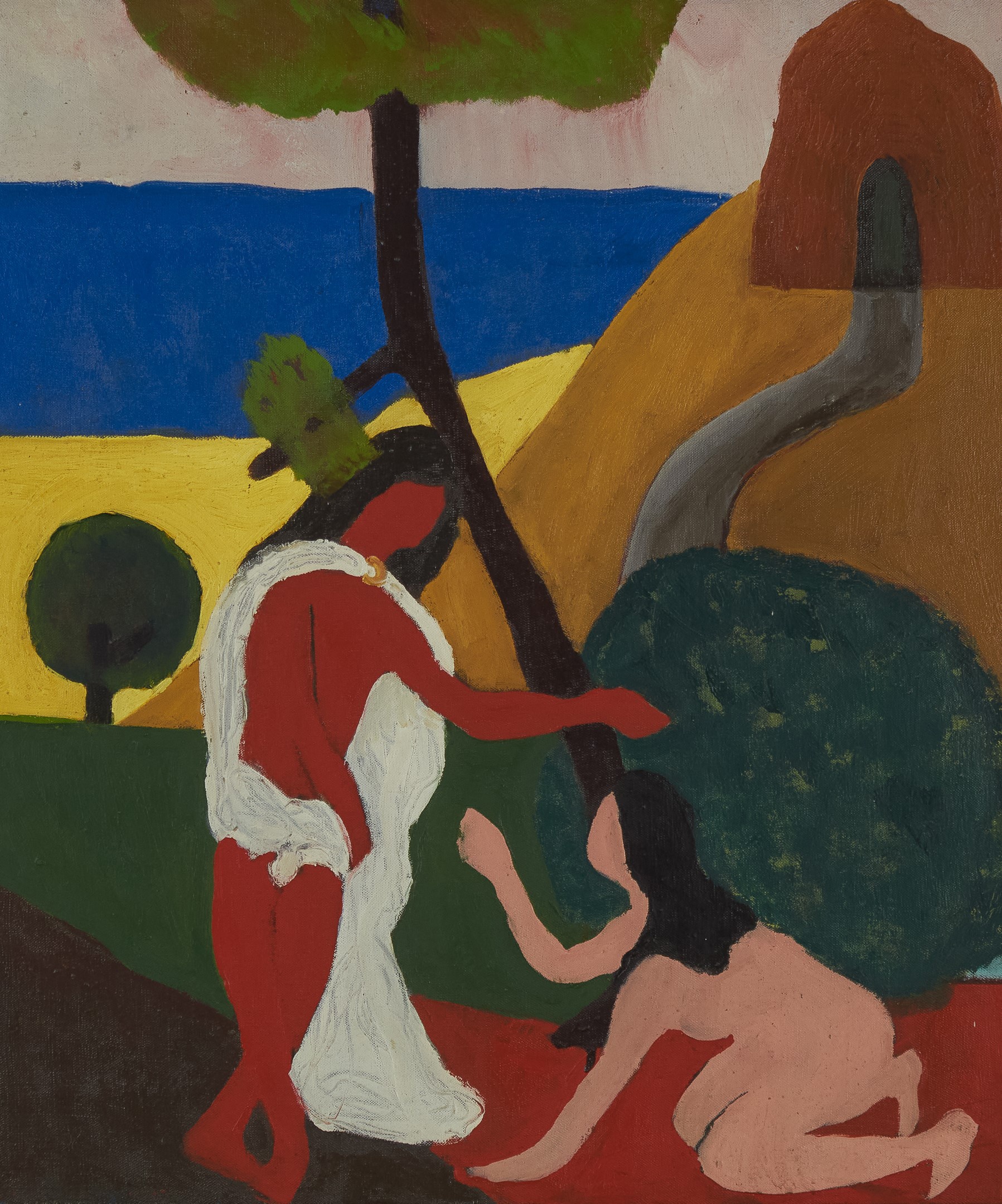Bob Thompson

Untitled (Noli Me Tangere) reprises a familiar encounter in Christian painting: the meeting of the resurrected Christ and Mary Magdalene as described in the Gospel of John. In composition, Thompson’s rendering closely follows Titian’s (c.1514), from the choreography of the figures to the central tree behind them and the citadel on the far hill. The moment transcribed is one of profound revelation: in her grief at finding Christ’s tomb empty, Mary mistakes the risen God for a gardener. Only when he speaks her name is her despair eclipsed by wonder. This reunion takes its title from Christ’s injunction to Mary, translated variably as touch me not and do not cling to me. Though the words complicate an otherwise intimate encounter – the anticipated touch deferred – Titian’s composition, as French philosopher Jean-Luc Nancy writes, is unique in conveying both the “distancing and tenderness” of this meeting. In Thompson’s restaging, the two figures are distilled to single shades – Christ red, Mary pink – the second shown without her mantle, the heavenly clouds given as a band of white above another of blue sky, the Italianate landscape abridged in five intersecting planes of colour. Likening Thompson to “a latter-day large-scale Fauve,” art critic Roberta Smith suggests that his vision of a red Christ, while evocative of both non-Christian deities and the Christian devil, is perhaps most compelling in that it casts the human God as racially ambiguous, and speaks to the artist’s “understanding of the power of colour and its ability to transform old into new.” Repeated in the context of segregated America at the height of the Civil Rights movement, the words spoken and touch denied – noli me tangere – are freighted with political weight.
b.1937, Louisville; d.1966, Rome
In his brief yet prolific career, Bob Thompson rehearsed and revised European art history’s canon, pairing scenes borrowed from such diverse sources as Giotto and Gauguin with a distinct formal sensibility notable for its chromatic intensity. His brilliantly saturated palette, bold figuration and graphic style cast him in opposition to the trajectory of abstract expressionism then in vogue in 1950s New York. Thompson did not look to mimic the scenes he transcribed but rather to reclaim or subvert the biblical or mythological stories they retold, transposing them to the political present of mid-century America. Raised in the Jim Crow South, the violence against people of colour under segregation is a persistent feature in many of his works. So, too, is the rise of the counterculture movement. The figures that populate his compositions, while often reduced to silhouettes of flat colour, include among them Thompson’s contemporaries and acquaintances: Beat poets, jazz musicians, and fellow artists. His paintings are at once religious allegory and social commentary, historical study and political gesture. But they are also wonderfully expressive experiments in colour, form and feeling. Of his work, Thompson said, “I cannot find a place nor category in which to put my paintings nor a name to call them.”